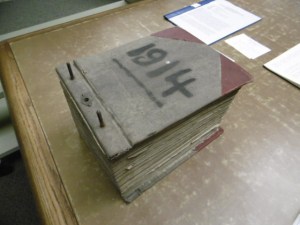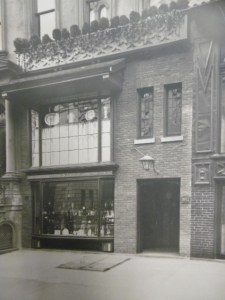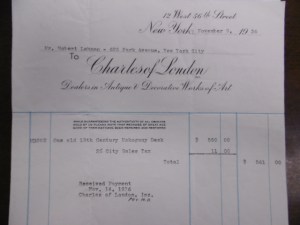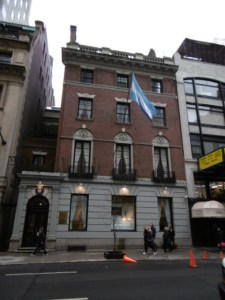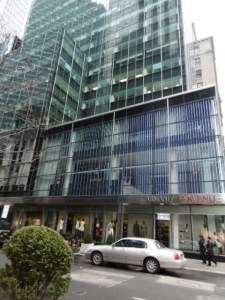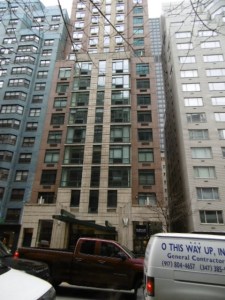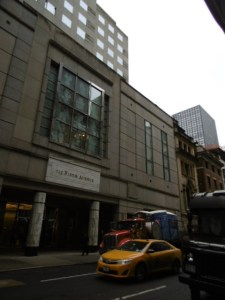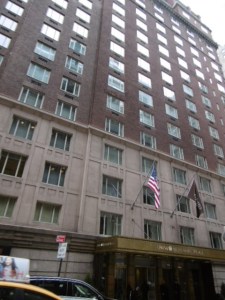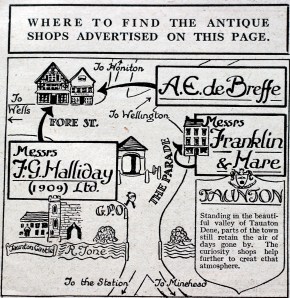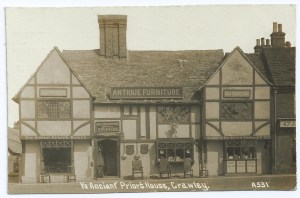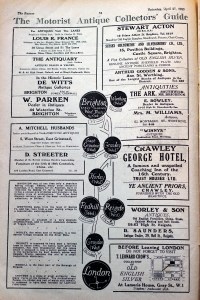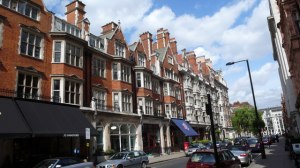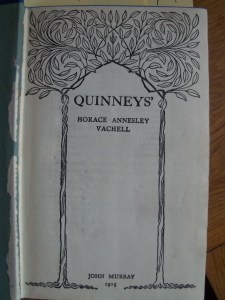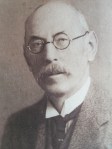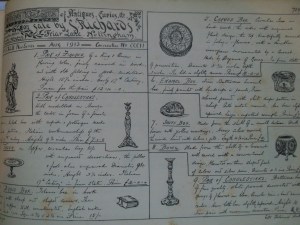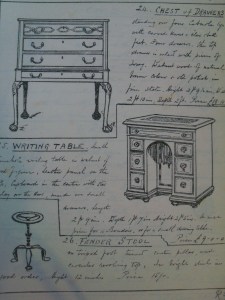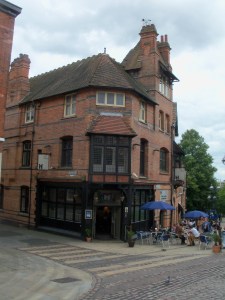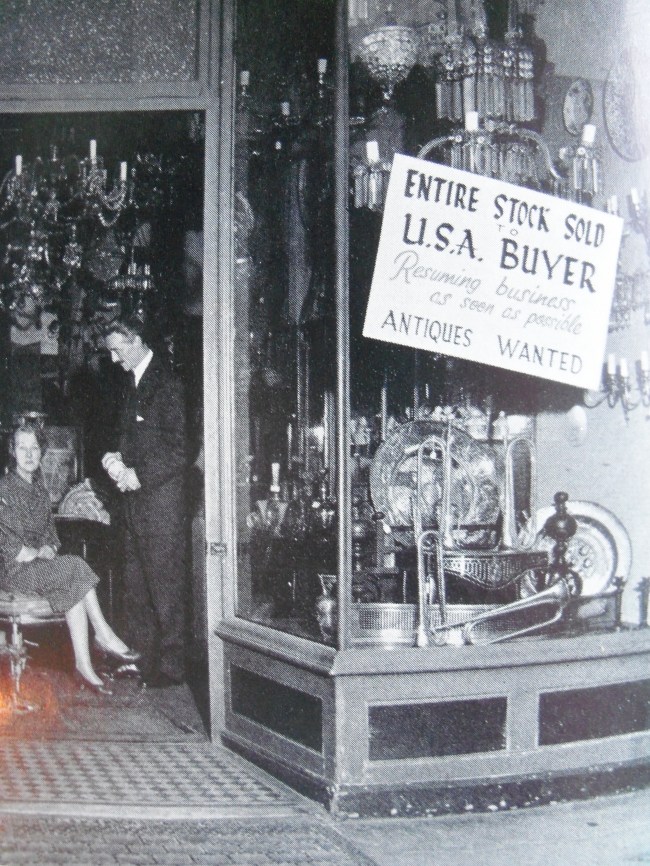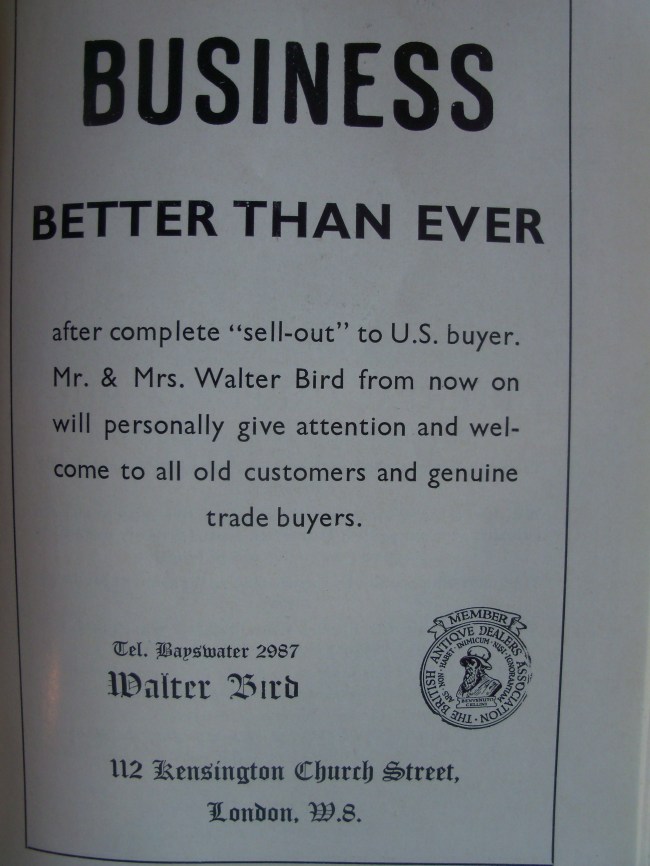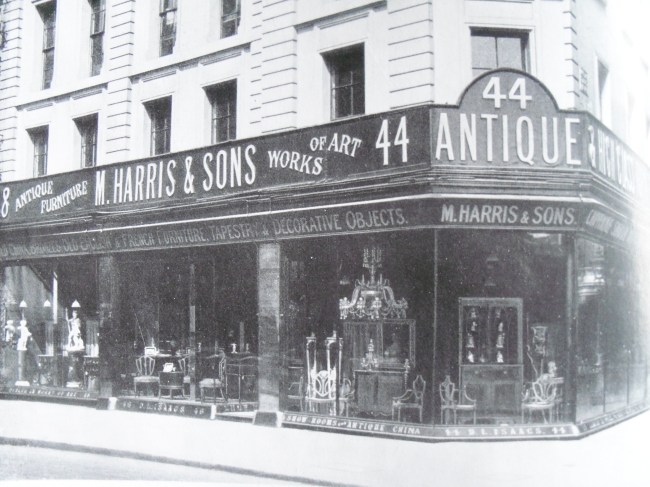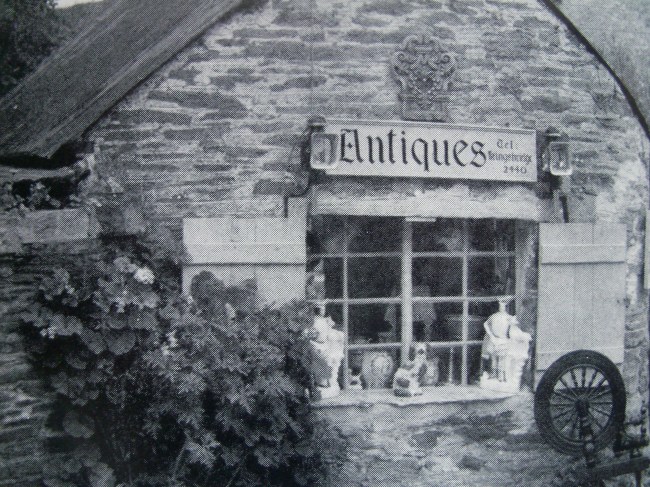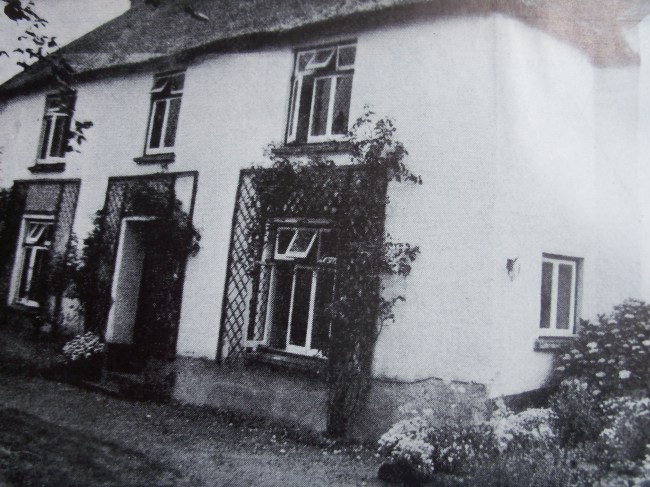Our corpus of material on the histories of antique dealers continues to increase – thanks to the many, many individuals who very generously send us information about their antique dealing businesses, or information about antique dealers they have known. But of course our richest seam of information on antique dealers from the past comes directly from the relatives and families of antique dealers. And it’s thanks to Charlotte Morse (and her son Ben, and her half-sister Michal), that we have a whole raft of information on her father, the well-known specialist dealer in antique oak furniture and early objects, Charles Morse (1913-1980).

Charlotte very kindly donated some ephemera, photographs, and a couple of the last remaining ‘stock books’ (dating from the 1970s) from her father’s antique dealing business, all of which make fascinating reading and will help the antique dealers’ research project enormously.
Charles Morse became one of the leading dealers in ‘Early Oak’ in the 1960s and 1970s, trading from very grand country house premises in Essex. He sold some spectacularly rare objects, many of which must remain in leading collections (if anyone recognises any of the objects in the photographs and knows more about them, or where they are, do let us know!). Morse began his life as an antique dealer in the years after the Second World War. He was trained as a journalist, and worked as a War Correspondent during the War, before getting a job with the Glasgow Express in the years immediately after WWII. Charlotte tells us that her father met the Belgian antique dealer George Baptiste during the War, and this must have been the catalyst for his interest in being an antiques dealer.
Morse opened his first antique shop, called, ‘Mr Pickwick’s Antiques’ in Connaught Avenue, Frinton-on-Sea, Essex in 1946. Below is an advertisement calendar produced by Morse in 1947, illustrative of the general business marketing strategies adopted by some antique dealing businesses in the decades after WWII.

Morse appears to have developed his antique dealing business very rapidly – Charlotte tells us he did good business with the American export trade at the time. He was trading from his home, Groton Manor, Suffolk by 1950, as well as operating a small shop in the village of Boxford, near Sudbury, Suffolk and opening a shop in Great Portland Street, London by the mid 1950s. By 1961 Morse had been elected to the British Antique Dealers’ Association and had a shop in the famous Portobello Road. Throughout the 1960s he was making regular buying trips to Europe, especially to Holland and France, buying early oak furniture and sculpture. Charlotte very kindly shared this photograph of Charles Morse’s VW camper van, loaded up with antique oak furniture, being craned down from the ferry from Amsterdam in 1962.

But Morse is perhaps most famous for trading from a number of historic properties that he owned in the 1960s and 1970s. He acquired ‘The White House’, Colne, Essex in about 1960, before buying Colne Priory, Essex in about 1967.
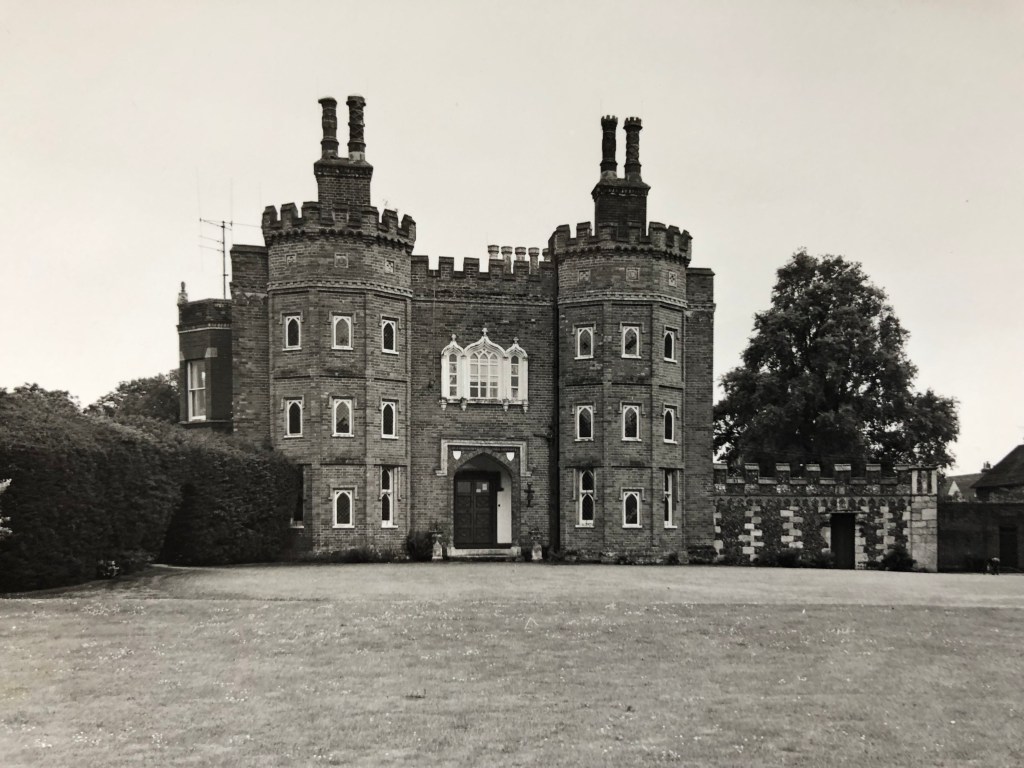
Colne Priory was rebuilt in 1825, incorporating elements of an 18th century house and was built in the grounds of a Benedictine Priory dating back to the 12th century. It was a highly appropriate historic property from which to deal in antiques. Indeed, the tradition of antique dealers trading from historic properties can be traced back to the 1920s and continued throughout the 20th century – the tradition also continues to this day of course.

Morse no doubt saw Colne Priory, and it’s historic interiors, as an effective marketing tool for selling antiques, but also, as Charlotte informed us, the house keyed into his love of history and the material culture of the past. Colne Priory was also a home of course, and below is a photograph the private dining room at Colne Priory, filled with antiques – the borderline between antique collecting and antique dealing has always been porous.

Morse sold Colne Priory in 1977, moving his home, and business, to Larks-in-the-Wood at Pentlow, Essex. Here, Morse continued to deal in oak furniture and early objects right up to his death in February 1980.
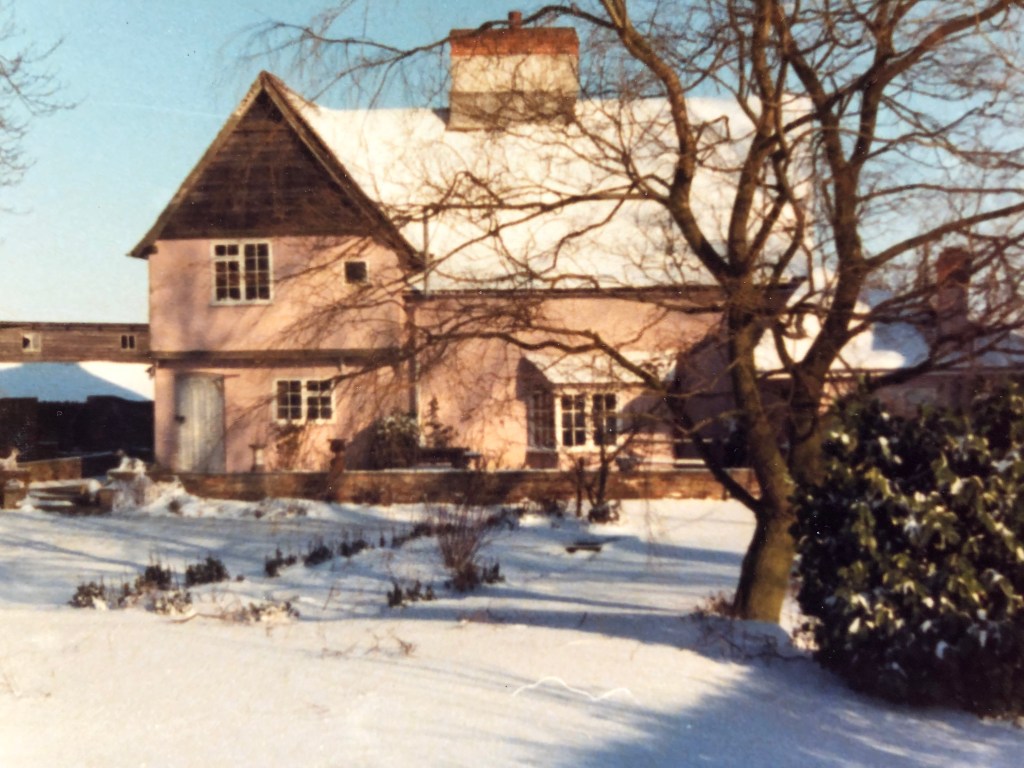
Morse sold many spectacularly rare pieces of early oak furniture and early sculpture and objects – this early oak hutch for example; the stone head corbel on the top, left, was, so Charlotte tells us, discovered in the lake in the grounds of Colne Priory, and must have come from the Benedictine Priory itself.
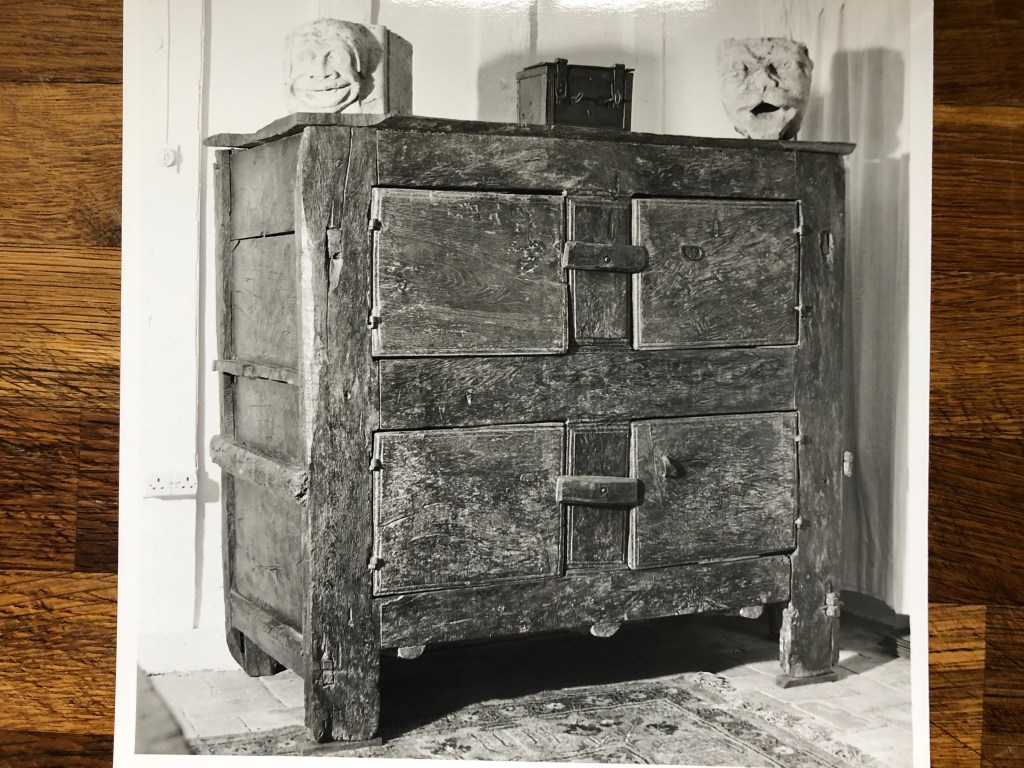
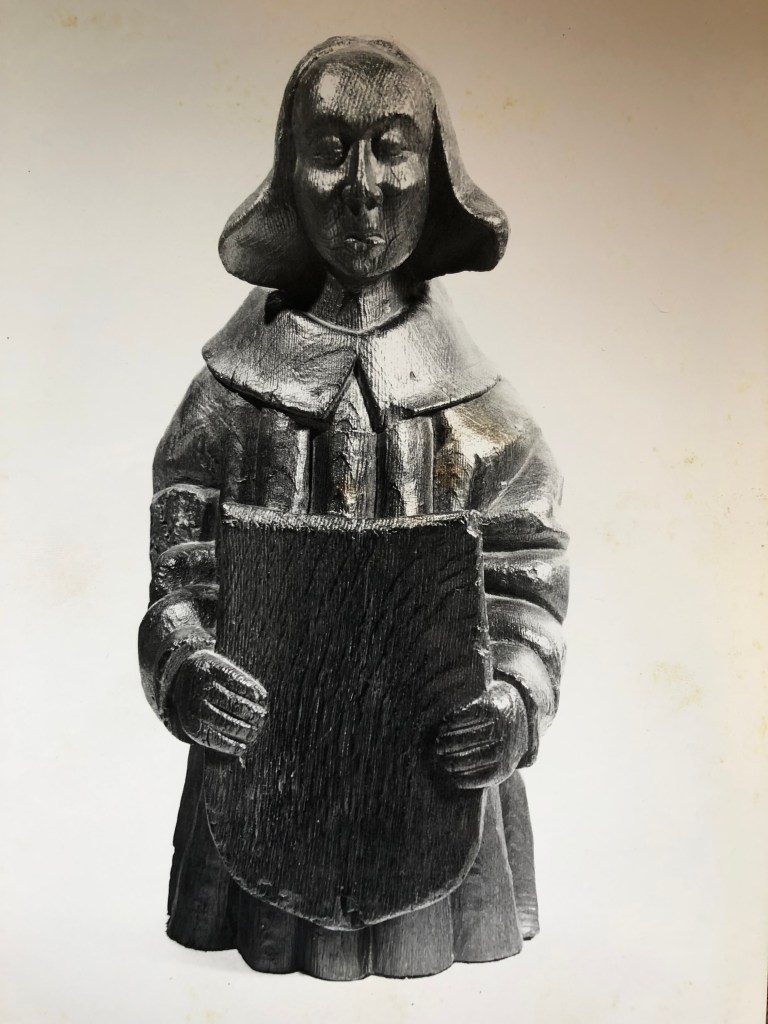
And (above) this 16th century oak Hammer Beam End, is typical of the quality of the stock of Charles Morse. As is this (below) 15th century Italian wooden painted and gilded Corpus Christi.
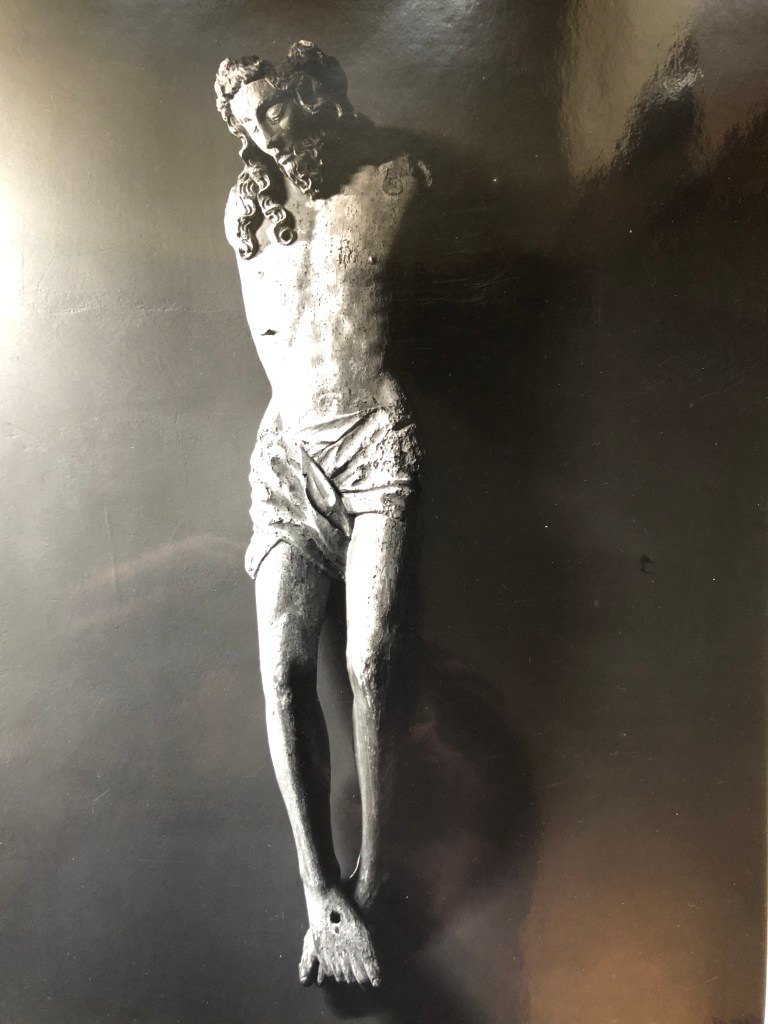
Charles Morse offered the sculpture for sale at the Northern Antique Dealers’ Fair in Harrogate in 1979, for the sum of £3,000. One does not get a sense of the size of the sculpture, until one sees Charlotte (then aged 22) carrying the sculpture into the fair.
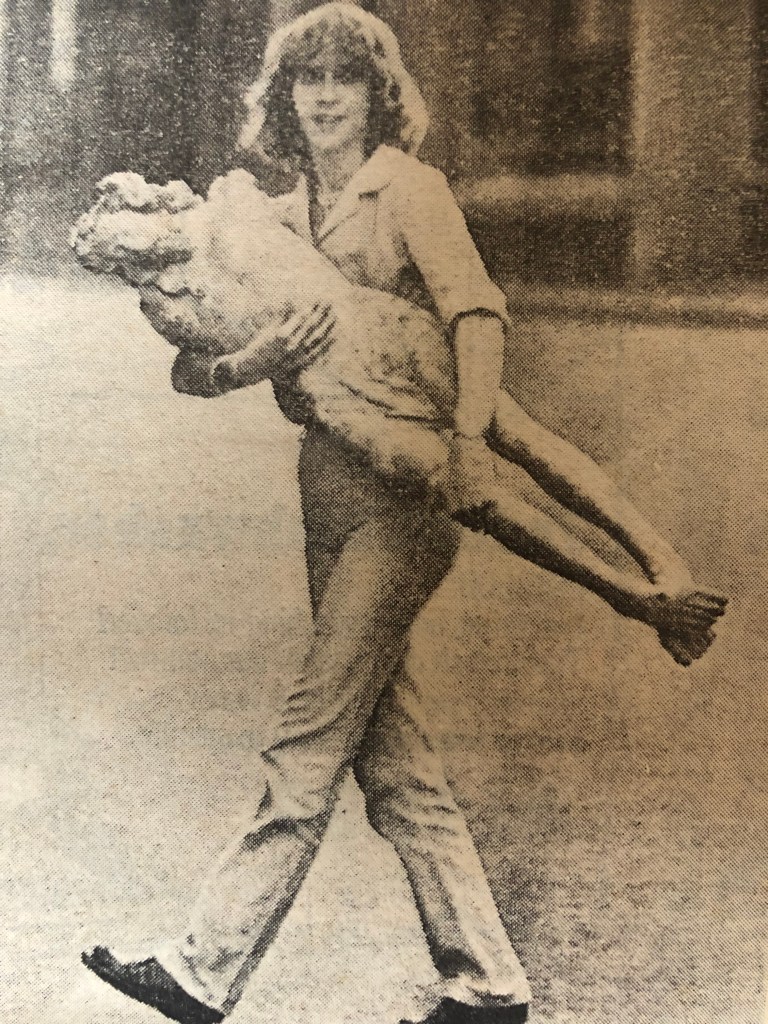
We are so grateful to Charlotte and her family for sharing this material, and her memories of her father, Charles Morse.
Mark
